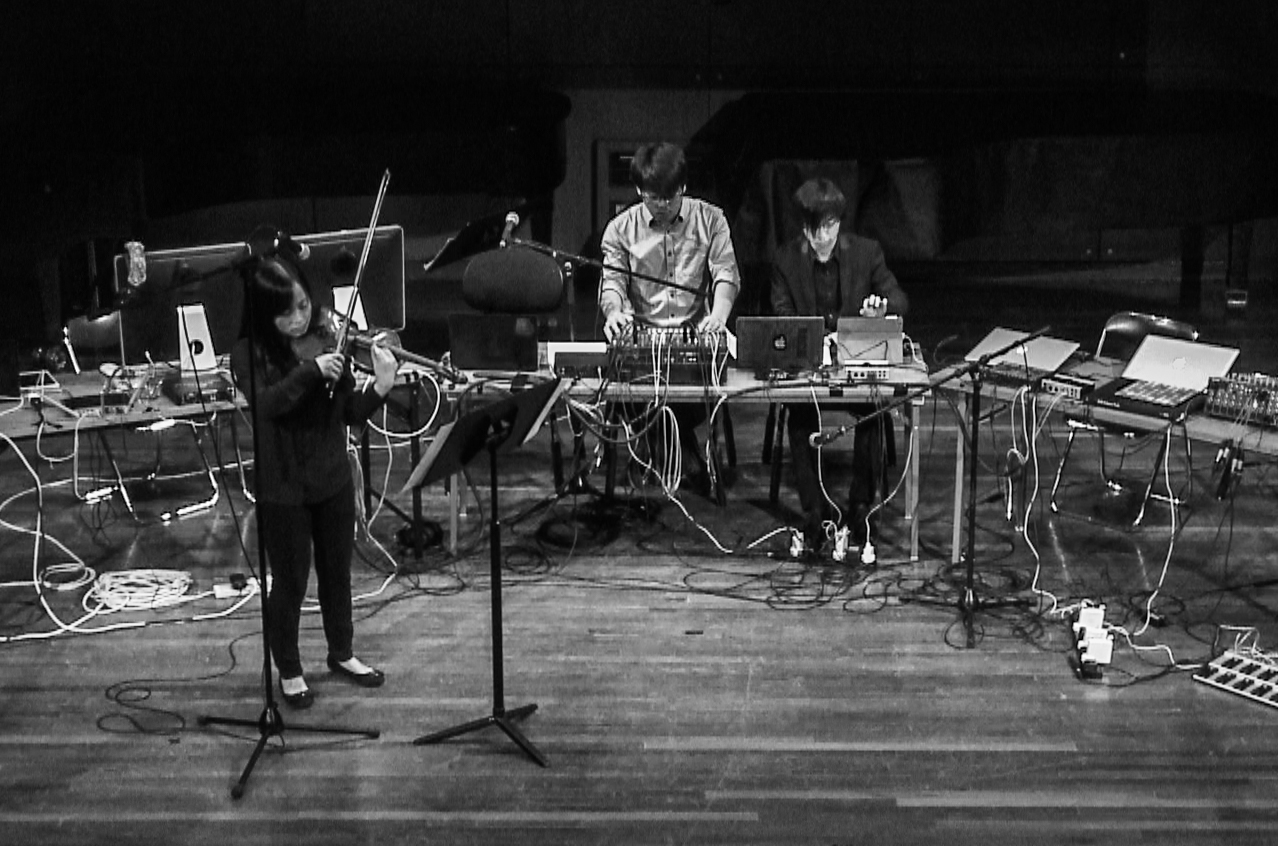Le Lys sur la Corde
弦上的百合, 2015for Violin and Live Electronics
performed by Wenqian Li and Larry Shuen
In late 19th century, August Wilhelmj, a German violinist, arranged the second movement of J.S. Bach’s Orchestral Suite No.3 to a piece for violin and piano, by modulating the key from its original D major to C major and transposing the melody down an octave, which should be played only on the G string of the violin. The arrangement had a great vogue once being performed. After tracing the source, people were amazed by this work which was composed by J.S. Bach hundred years ago. Since then, this arrangement was deeply admired by violinists and the audience, whom gave it a nickname Air on the G String.
Wilhelmj was like giving a new life to the origin, as this beautiful masterpiece may vanish without his arrangement and interpretation. What becomes provoking is that there are more people who have listened to Air on the G string than the people who knew Bach’s Orchestral Suite No.3; whereas people would only associate Air on the G String with Bach, but not with Wilhelmj. Apparently, Bach did not get all the credit for Air on the G String. Wilhelmj was the one who gave new definitions to the original piece, which made it passing down through centuries, continuing to be observed today.
I believe that how performers translate the music is like a music re-composition. Performers will fill their personal characteristics into the music based on their experience, techniques, understanding, preference, emotion, etc. Somehow in the literature of contemporary music, following the score exactly without making any mistake has become the common performance practice; it seems there is no room for performers to express. Can this phenomenon be attributed to the complicated and highly-demanding nature of contemporary music? To the abstract concept of creation? To the profound message hidden in the music? Or to the other causes?
These are the questions raised by Le Lys sur la Corde. In this composition, I concentrated on the design of structure and moods, leaving much freedom for the performer to interpret. I wish to demonstrate the creativity, musicality, personality of both the performer’s and mine in this flexible music design.
Take Le Lys sur la Corde as a portrayal, would the message be more in-depth when it is told in a foreign language?
19世紀晚期,德國小提琴家威廉密將巴哈的《第三管弦組曲》中第二樂章改編為小提琴和鋼琴的合奏,把原先的D大調轉調到C大調,將旋律降低一個八度並只用小提琴的G弦演奏。此改編樂曲一經演出後便大受歡迎,追根溯源後,人們才知道這原是巴哈一百多年前的作品。自此,這首樂曲便深受小提琴家和聽眾鍾愛,人們給了它一個別名:《G弦上的詠嘆調》。
威廉密彷彿給了原曲新生命,沒有他的改編和演繹,也許這首優美的樂曲一直不聞於世。耐人尋味的是,聽過《G弦上的詠嘆調》的人遠比認識巴哈《第三管弦組曲》的人多;多數人聽到這首樂曲時只會聯想起巴哈,而不是威廉密。明顯地,《G弦上的詠嘆調》並非巴哈一人的結晶,威廉密在改編過程中賦予了它新的意義,使樂曲廣泛流傳。
我認為演奏家對作品的詮釋就如把作品再創造,因演奏家以他的經驗、技巧、演繹方法、偏好、情感等,令作品呈現他獨特的個人色彩。不知怎樣,現代音樂中似乎缺少了給演奏者展現個性的空間;只需按照樂譜要求、把音符準確無誤地奏出來慢慢成了演奏現代音樂的常例。是否因為現代音樂過於複雜和困難?是否因為創作理念過於抽象?是否因為藉音樂傳達的訊息過於奧妙?還是其他的原因?
《弦上的百合》正是我對這現象的提問。在這作品中,我主要設計音樂的結構和氣氛,演奏者能自由演繹不同的音樂素材;我希望在具有彈性的音樂設計中,同時表現我和演奏者的創意、音樂感、個性等。
《弦上的百合》的譯名是法文,恰好是個寫照:想說的話以外文說出,聽起來格外有深度。




//[Score preview]